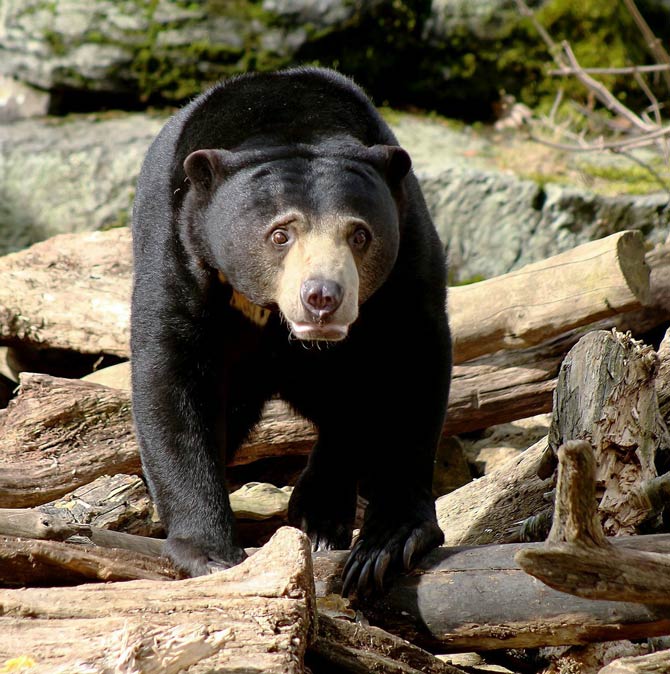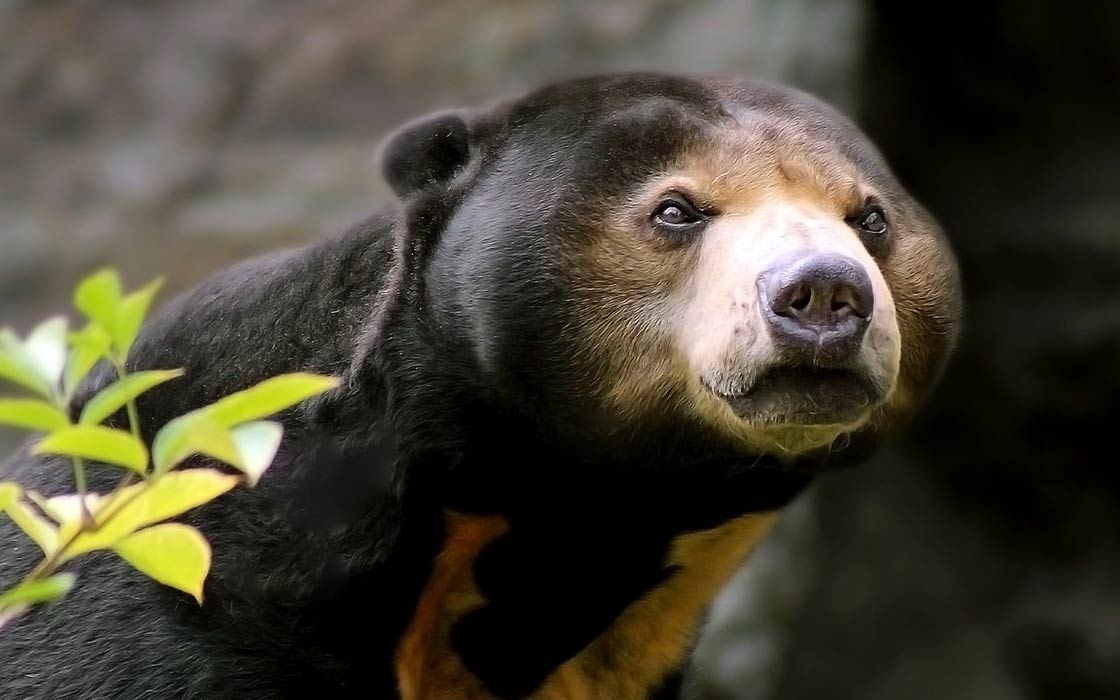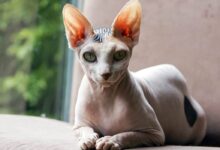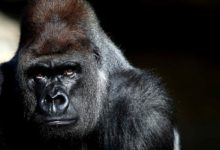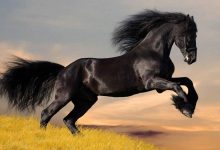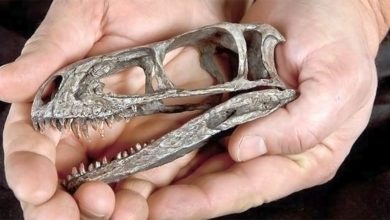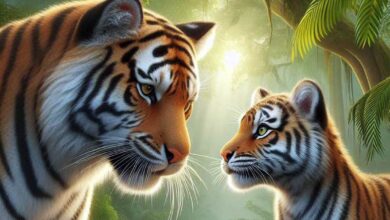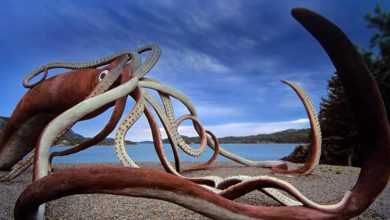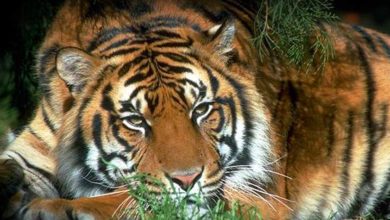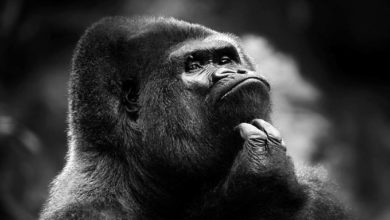Sun bear (Helarctos malayanus)
As one of the most mysterious representatives of the family, it chose dense rainforests as its habitat. Although it moves well on the ground, the sun bear spends most of its life among the branches of tall trees, which, unfortunately, are less and less in the Asian jungles.
Classification
- Kingdom: Animalia
- Phylum: Chordata
- Class: Mammalia
- Order: Carnivora
- Family: Ursidae
- Subfamily: Ursinae
- Genus: Helarctos
- Species: Helarctos malayanus
- Subspecies:
- Malayan sun bear (Helarctos malayanus malayanus)
- Bornean sun bear (Helarctos malayanus euryspilus)
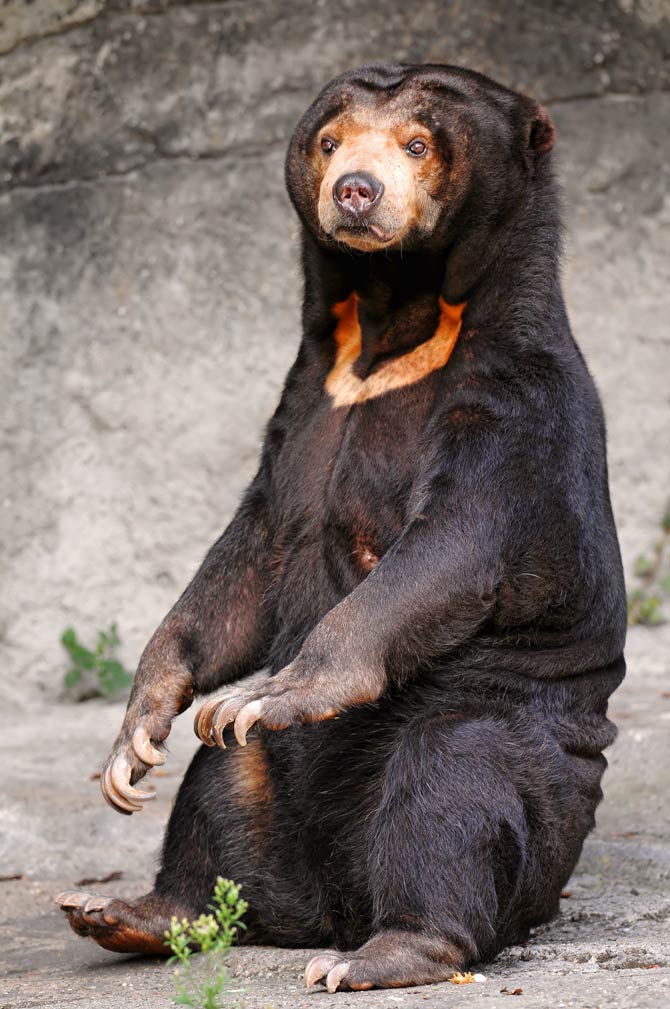
Occurrence
It was once found in all countries of Southeast Asia, but due to the rapid growth of cities, it has become one of the rarest species in the world. Today it lives in Borneo and Sumatra and in the continental forests of the Malay Peninsula, Thailand, Laos, Cambodia and Vietnam, in addition, several small populations are found in eastern India and southern China.
The favorite habitat of the sun bears is rainforests, where they find not only plenty of food, but also protection against predators. However, there is less and less room for the sun bear, because deforestation for agriculture (mainly the creation of palm plantations that produce palm oil), leads to the felling of rare and valuable tropical trees for the benefit of the timber industry.
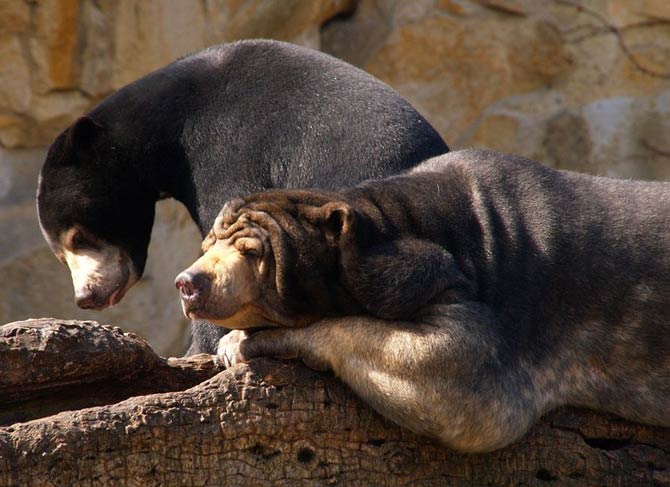
Characteristic
Appearance
The coat of this little bear is usually jet black, short and shiny, although some specimens are reddish-brown or gray, the exception being the bright muzzle, the color of which extends to the eyes. A characteristic element of the coat is undoubtedly a clear symbol on the chest, resembling the letter “U”, usually orange, yellow or white, sometimes it can be spotted or even patched.
The sun bear has a wide and relatively short snout and a large head, which makes it look somewhat like a dog. On the top of the head, we can see small, rounded ears, a strongly wrinkled forehead between them, and a fleshy and very long tongue in the mouth. The paws point slightly inward, they are large, equipped with long and curved claws, thanks to which the bear climbs trees perfectly. Its feet and paws are exceptionally large compared to its body size, so it is suspected that they are also used for digging and breaking dead wood in search of insects.
Adults are only 100 – 140 cm (39 – 55 in) long and weigh 25–65 kg (55–143 lb); (males are 10-20% larger than females). The teeth are large, especially the canines; it also impresses with the high pressing force of the jaws compared to the size of the body. Overall, the morphology of the Sun bear (flattened chest, large paws, strong limbs) shows an ideal adaptation to climbing.

Diet
An important element of the diet is honey, bees and beehives, but the sun bear is considered an omnivore that also hunts for birds, rodents and small reptiles. It usually eats termites, ants, beetle and bee larvae, and from fruit it chooses mostly figs, if available.
From time to time, it eats the shoots of some palm trees, several species of flowers (the diet of bears from the island of Borneo consists of more than 50% of Moraceae, Burseraceae and Myrtaceae). Often in the places where the sun bear is found, you can find trees stripped of their bark, where it looked for wild bees.
The sun bear also destroys termite mounds with its strong claws and greedily licks their contents. It probably tracks food with its keen sense of smell.
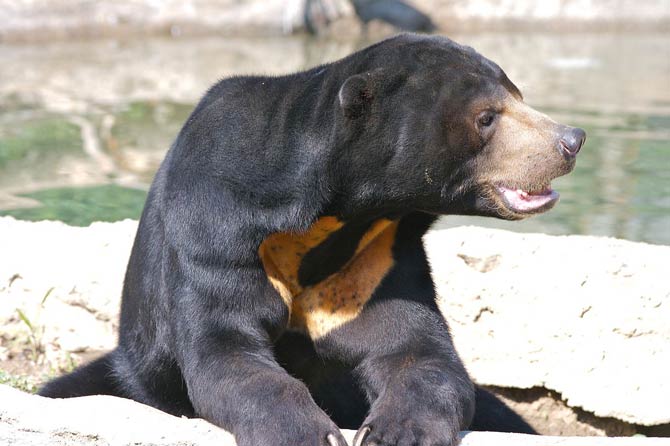
Lifestyle, behavior
Because it lives in the tropics, where the sun shines intensely all year round and food is plentiful, the sun bear does not hibernate.
It leads a solitary lifestyle, but the exception is the female taking care of her offspring, which she feeds with milk for about 18 months. While some male individuals are active during the day, many forage at night, mostly those who are disturbed by humans during the day. It sleeps and rests in hollow tree trunks or in branches high above the ground. In captivity, it shows social behavior and disturbs the rhythm of sleep (sleeps mainly during the day). In the wild, it can be very dangerous to humans if frightened or startled.
It spends most of its life in trees, sleeping in a nest with a leafy canopy, which proves its great climbing skills. It is helped by curved claws, thanks to which it can climb very quickly, but it can also bear its weight on… teeth.
The least known species of bear
However, little is known about the sun bear – it is the least understood species of bear.

Reproduction
Equally, little is known about the reproduction of the sun bear. Typically, females with one young, rarely two, are observed; pregnancy lasts about 95 days, but there are big discrepancies: females give birth both after 3 and 8 months of pregnancy (the amount of food and individual preferences of the female are of enormous importance).
It is also possible that – similar to other bear species – sun bear may delay implantation of a fertilized egg, thanks to which the young are born at a time when the mother has most fat reserves, the weather is pleasant, and important seasonal foods are widely available.
The female gives birth in an empty burrow, and a naked and completely defenseless baby is born. It is believed that the young stay with their mother until they become independent, i.e. until they are 2 years old. Females are ready to breed after about 3 years, males – after about 4. Sun bears live on average 25 years in the wild, in captivity they often exceed 30 years.
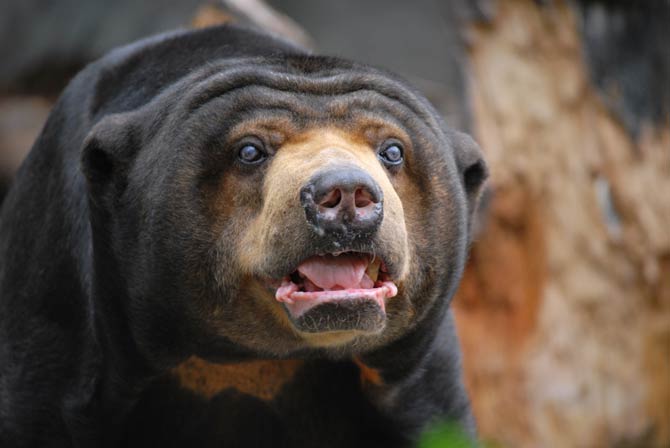
Detailed data and dimensions (size)
Sun bear (Helarctos malayanus)
- Body length: 100 – 140 cm (39 – 55 in); (males are 10 – 20% larger than females)
- Height: 70 cm (28 in)
- Weight: 25–65 kg (55–143 lb).
- Tail length: 3 – 7 cm (1 – 3 in)
- Tongue length: 20–25 cm (8–10 in)
- Lifespan: up to approx. 25 years in the wild, over 30 years in captivity

Sun bear – interesting facts
- Sun bear is the smallest species of bear in the world.
- Sun bear has the longest tongue among all bear species, it measures 20-25 cm (8–10 in) and serves as a “trap” for insects and honey.
- The sun bear has very loose skin on its neck – when a tiger or a clouded leopard grabs it, the bear turns to bite off a flap of skin held by an attacking predator.
- The sun bear is called the Honey bear because of its perpetual appetite for honey and honeycombs.
- Due to poaching, the sun bear has been declared extinct in Tibet, Bangladesh and Yunnan Province (southern China).
- Since 1994, sun bears have been staying at the Zoological Garden in Cologne (Germany).
- The sun bear is at risk of extinction due to illegal hunting, deforestation, and attacks by tigers and reticulated pythons.
